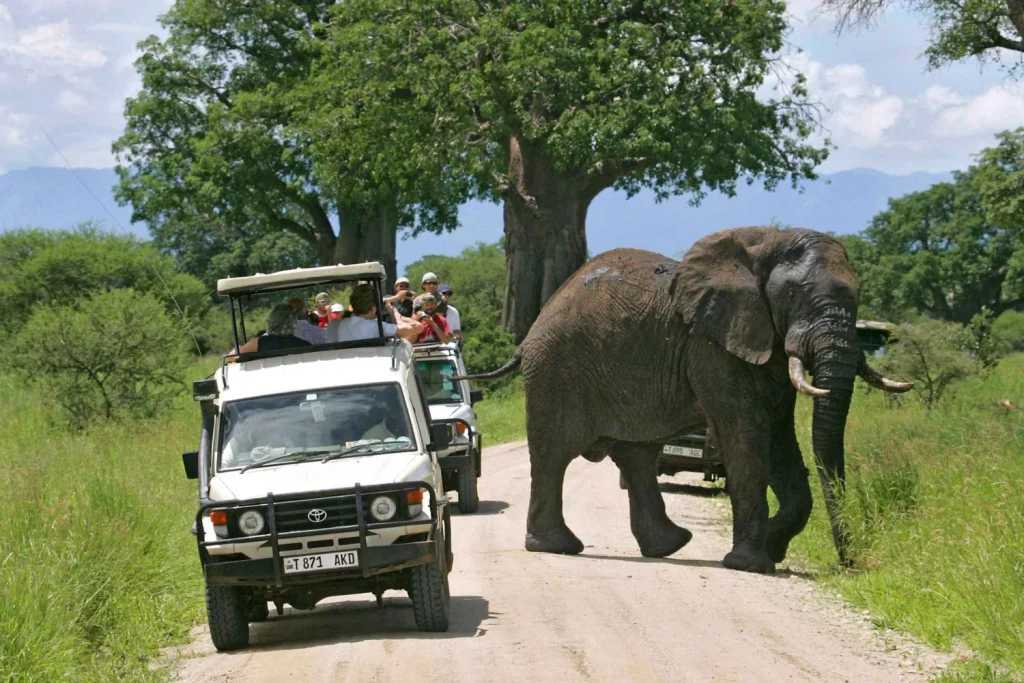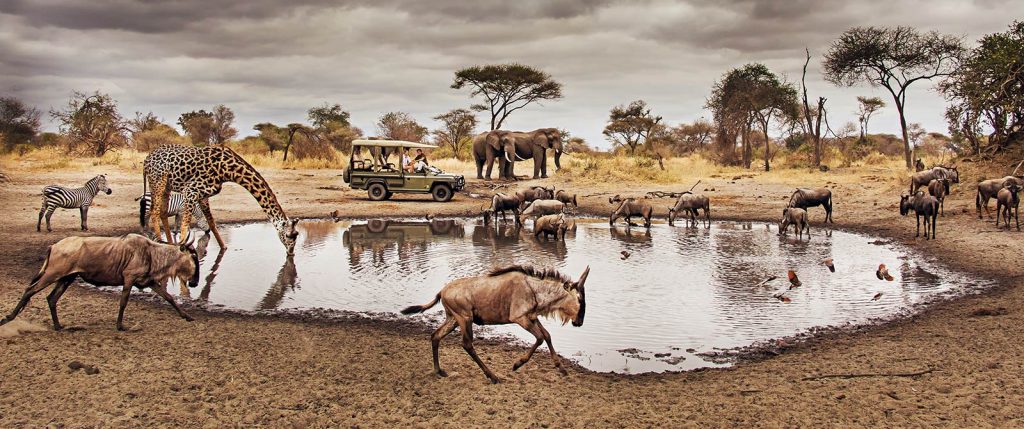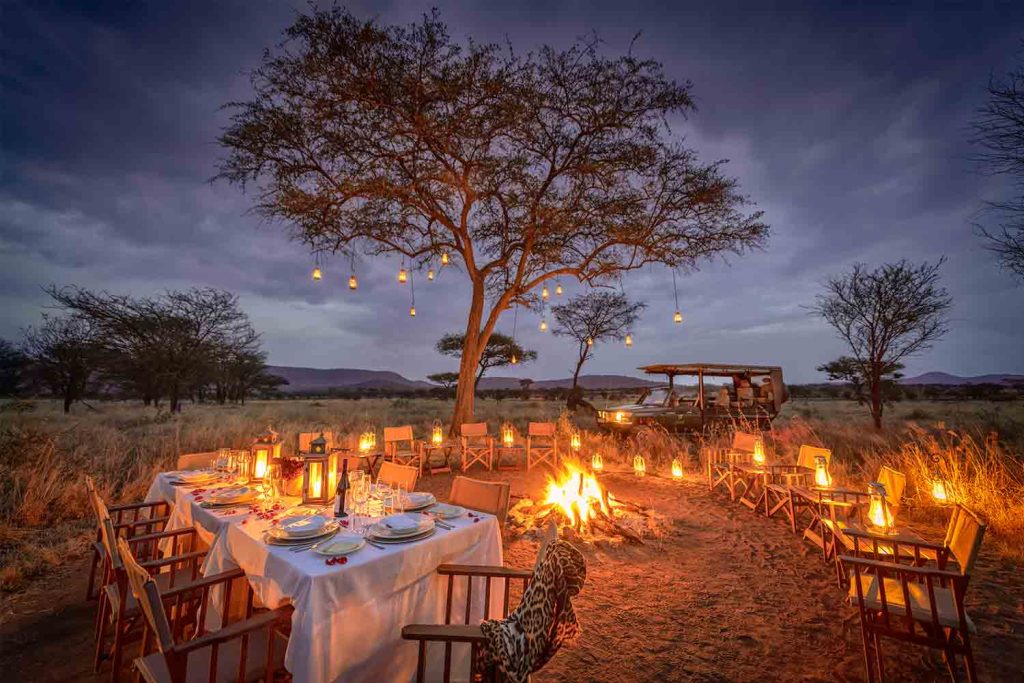The Conservation Impact of Tarangire National Park




Tarangire National Park, located in northern Tanzania, is one of the country’s most significant and ecologically diverse national parks. Renowned for its vast open savannahs, iconic baobab trees, and impressive concentrations of wildlife, it plays a crucial role in the broader conservation landscape of Tanzania. With its rich biodiversity and vital ecosystems, the Tarangire Conservation Impact extends far beyond the park’s boundaries, influencing wildlife populations, habitat preservation, and local communities. This article delves into the many facets of Tarangire’s conservation impact, highlighting its role in protecting wildlife, maintaining natural ecosystems, and contributing to sustainable tourism.
1. Tarangire National Park: A Key Player in Tanzania’s Conservation Strategy
Tarangire National Park is one of the oldest and most important conservation areas in Tanzania, and it is part of the greater Tarangire-Manyara Ecosystem. The park is recognized for its extraordinary variety of habitats, from open grasslands and acacia woodlands to swamps and riverine forests, each supporting different species of flora and fauna. It is especially well known for its large population of African elephants and its status as one of the top destinations for wildlife viewing in East Africa.
The Tarangire Conservation Impact is substantial in preserving the delicate balance of these ecosystems, which include critical corridors for migratory animals and seasonal water sources that attract a wide variety of wildlife. The park’s role in maintaining biodiversity is essential for the overall health of the region’s ecosystems and the conservation of species that rely on these habitats for survival.
2. The Role of Tarangire in Elephant Conservation
One of the most significant aspects of the Tarangire Conservation Impact is its contribution to elephant conservation. The park is home to one of the largest elephant populations in Tanzania, with over 3,000 elephants calling the park their home, especially during the dry season. Tarangire’s seasonal migration routes provide these elephants with access to important resources such as food and water. The park is an essential refuge for these magnificent creatures, particularly during the long dry season when they seek out waterholes and the Tarangire River.
Tarangire is a vital part of the elephant migration corridor that connects to neighboring areas like the Serengeti National Park and Lake Manyara National Park, allowing for gene flow between populations and reducing the risks associated with overpopulation in any one area. The presence of large elephant herds also has a significant ecological role, as they help to shape the landscape by knocking down trees and creating waterholes, which in turn benefits other species.
However, elephants in Tarangire also face threats such as poaching, habitat loss, and human-wildlife conflict. The Tarangire Conservation Impact includes ongoing anti-poaching efforts and programs designed to protect elephants and other species from illegal hunting and encroachment.
3. Habitat Protection and Ecosystem Balance
The Tarangire Conservation Impact extends to the preservation of several important ecosystems. The park is home to a variety of habitats, from the Tarangire River to the seasonal swamps and open plains, each supporting diverse species. The rich diversity of plant life in Tarangire provides food for herbivores like wildebeest, zebras, and gazelles, while the riverine areas host predators such as lions, cheetahs, and hyenas.
By maintaining these habitats, Tarangire ensures the long-term survival of a variety of species. For instance, the park’s seasonal wetland areas are crucial for waterfowl and migrating birds, especially during the wet season, and the forested regions provide shelter for many mammals. The preservation of these ecosystems is critical not only for wildlife but also for sustaining the local communities that depend on them for water, agriculture, and tourism.
4. Supporting Biodiversity Through Wildlife Corridors
One of the key components of the Tarangire Conservation Impact is its role in maintaining the wildlife corridors that connect Tarangire to other national parks and game reserves, such as the Serengeti and Ngorongoro Crater. These corridors allow for the seasonal migration of wildlife and facilitate gene flow between different populations, preventing inbreeding and maintaining genetic diversity. Species such as wildebeest, zebras, and buffalo regularly move between Tarangire and the Serengeti in search of food and water, while elephants use the corridors to access key resources across a vast area.
The integrity of these corridors is essential for the continued survival of many species. Fragmentation of these corridors due to human activity, such as agriculture or infrastructure development, can lead to isolation of wildlife populations, which can threaten their long-term survival. Conservation efforts in Tarangire focus on preserving these critical migration routes by preventing encroachment and establishing protected areas that ensure safe passage for animals.
5. The Role of Ecotourism in Supporting Conservation
Ecotourism plays a crucial role in the Tarangire Conservation Impact by providing funding for park management and conservation programs. Tourism revenue supports anti-poaching operations, habitat restoration efforts, and wildlife monitoring activities. Additionally, tourism helps create jobs for local communities, providing an incentive for people to actively participate in conservation efforts and view wildlife protection as a sustainable alternative to activities that harm the environment.
Visitors to Tarangire National Park can experience the diverse wildlife, including elephants, lions, giraffes, and the incredible birdlife, which is a direct result of the park’s successful conservation policies. Responsible tourism practices, such as low-impact safari tours and wildlife monitoring, help ensure that tourism benefits both the park’s biodiversity and the local communities while minimizing environmental harm.
6. The Threats to Tarangire and Its Conservation Challenges
Despite the park’s success in preserving wildlife and ecosystems, Tarangire National Park faces several challenges to its conservation efforts. Human-wildlife conflict is a significant issue, especially as local populations grow and encroach on land that was previously used by wildlife. As people expand agricultural activities or build infrastructure, they often come into direct contact with wildlife, leading to crop raiding by elephants and other herbivores, as well as damage to property.
Poaching for bushmeat, ivory, and rhino horn remains a persistent threat in the park. Despite efforts by Tanzania’s Wildlife Conservation Society (WCS), local authorities, and park rangers, poaching activities still occur. Illegal hunting can decimate populations of vulnerable species, and the trade in elephant ivory continues to pose a major challenge to elephant conservation in Tarangire and beyond.
Climate change is another emerging threat that impacts water availability and the timing of seasonal migrations. Reduced rainfall and altered weather patterns can result in drought conditions, reducing the amount of water available for wildlife and forcing animals to congregate at fewer water sources, which increases the risk of disease transmission and conflict.
7. Ongoing Conservation Efforts and the Future of Tarangire
Conservation efforts in Tarangire National Park continue to evolve, with ongoing programs to protect wildlife, restore habitats, and manage the park’s resources sustainably. The Tanzania National Parks Authority (TANAPA) and its partners are working to improve the park’s infrastructure, implement stricter anti-poaching measures, and expand community outreach programs to reduce human-wildlife conflict.
Through the continued support of local communities, conservation organizations, and responsible tourism, Tarangire’s conservation impact can be sustained for future generations. Efforts to maintain wildlife corridors, combat poaching, and support sustainable land management are essential in ensuring that Tarangire remains a key pillar of Tanzania’s conservation strategy.
Conclusion: The Vital Conservation Impact of Tarangire National Park
Tarangire National Park plays a central role in the conservation of Tanzania’s natural heritage. Its conservation impact extends far beyond the park’s borders, influencing both wildlife populations and the surrounding ecosystems. By protecting critical habitats, supporting wildlife migrations, and engaging in sustainable tourism practices, Tarangire contributes significantly to the biodiversity of the region and the broader Tarangire-Manyara Ecosystem.
However, the park faces challenges, and it is vital that conservation efforts continue to evolve in response to threats such as poaching, human-wildlife conflict, and climate change. The collective efforts of the Tanzanian government, conservation organizations, and local communities will ensure that Tarangire National Park continues to thrive, securing its future as one of Africa’s most important wildlife sanctuaries.

One Comment